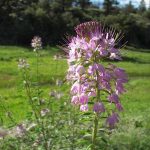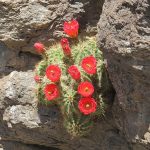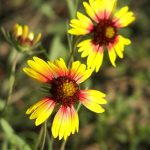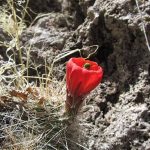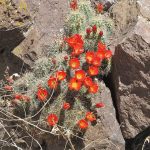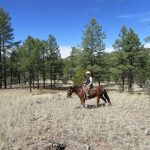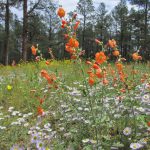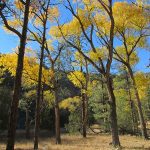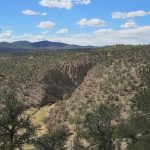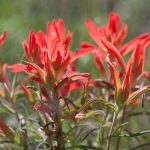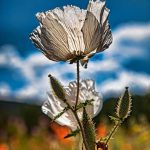
Gila Flora & Vegetation
Flowers, Trees & Plants
At its highest, the wilderness is an area of dense alpine forest — the Canadian biotic zone with vegetation of Douglas fir and Engelmann spruce. Some aspen is found at the higher reaches, providing shelter for the young fir and spruce seedlings. This is elk country, where the decaying trees nurture an abundant undergrowth. Heavy snows provide a constant supply of water for wildlife and trees. The herbs and shrub berries were a source of food for the Apaches, and today continue to serve the animals of the region. You’ll find wildflowers and ferns in the more open stands of aspen. However, because of firefighting policies which suppressed wildfires over the past century, there are not as many aspens as there might be through natural evolvement alone.
At lower levels is the Uplands or Transition zone, where most of the animals and birds are found, and ponderosa pine predominates. Here the tall pines are in different stages of growth. The portions of the forest which were logged (or burned by wildfires) are densely-packed. The older trees unaffected by earlier logging, are widely-spaced, permitting a healthy undergrowth to thrive. Visitors may walk through these stands, off the trails, to see what a natural forest is really like. Along the lower slopes and those which face south is the pinyon-juniper woodland. The short pines and junipers are joined here by Emory and Gambel’s oaks, an important source of animal food, as are the pine nuts. Throughout this more arid zone are the plants of the high desert: yucca (primarily Spanish dagger), agave, prickly pear, and manzanita. The creeks which flow from the sources of the three forks of the Gila River tumble through the Uplands zone. The grasses in this zone provide forage for elk, deer (mule and white-tailed), and antelope. Foxes and prairie dogs are numerous, as are hawks and eagles.
Vegetation of the Desert
The bottomlands are in the high desert–the Upper Sonoran zone–much higher than the neighboring desert areas of southern New Mexico and the San Pedro Valley across the Arizona boundary. Here, streams flow year-round, creating riparian habitats beside the rocky bottoms of the fast-moving creeks and the river forks. These are trout streams, with fast moving sections and quieter pools which house insects on which the fish feed. Along with the trout, including the Gila trout, are dace, chubs, suckers, bass and catfish. The streamside habitats are populated by an amazing variety of trees and shrubs:
- Alder
- Cottonwood
- Willow
- Walnut
- Maple
- Ash
- Box Elder
Vines (Virginia creeper) and fruit-bearing plants spread over the riverbanks, among them grapes, strawberry, raspberry, and wild onion.
On more arid slopes are all the succulents and other vegetation of the desert: sagebrush, creosote bush, yucca and scrub brush. You’ll see the effects of periodic flooding, massive movements of soil and vegetation brought about by rampaging rivers after heavy rainstorms. The proximity of the rich, dense riparian habitats and the high, arid desert brings constant wonder. In addition, ponderosa pine is also found at the lower levels, keeping to the south (north-facing) slopes, while the pinyon-juniper woodland covers the north slopes.
